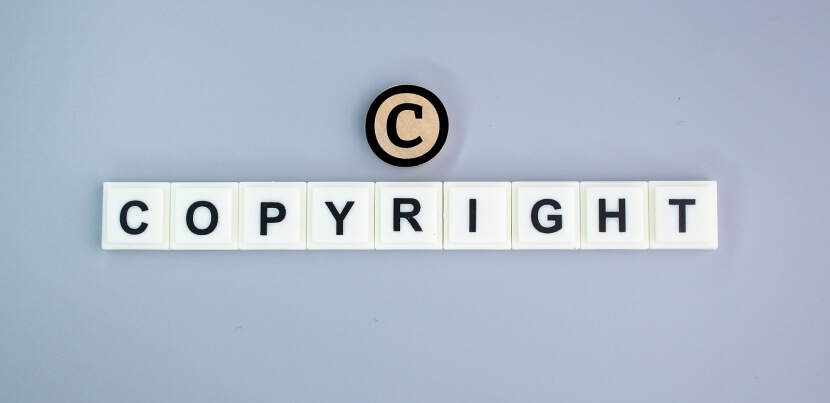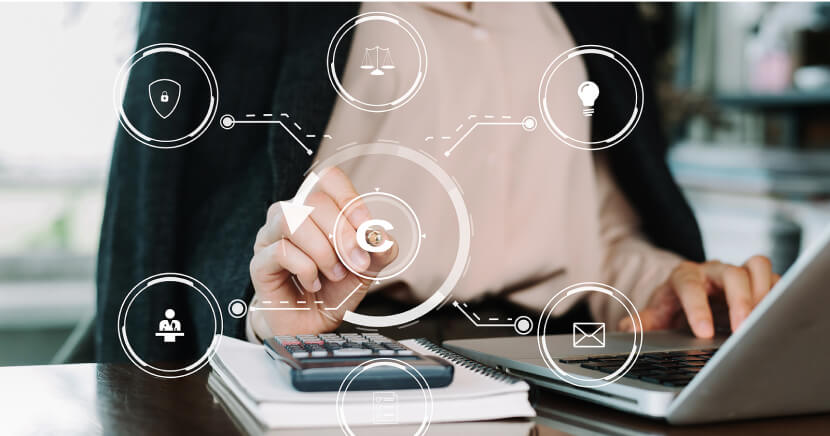According to the Intellectual Property Rights Office (IPRO), the world's first copyright law was the Statute of Anne. Enacted in England in 1710, this piece of legislation officially bore the rather unwieldy full title of "An Act for the Encouragement of Learning, by Vesting the Copies of Printed Books in the Authors or Purchasers of such Copies, during the Times therein mentioned".
Per IPRO, "This Act introduced for the first time the concept of the author of a work being the owner of its copyright, and laid out fixed terms of protection." As its full name indicates, the Statute of Anne covered only printed books, but it laid the groundwork for future copyright laws designed to provide legal protection for other original works of authorship, such as music, art, films, software and other forms of creative expression.
Librarians have a responsibility to stay informed
Because an important aspect of their role involves managing and providing access to copyrighted materials, librarians have a responsibility to stay informed about copyright law.
To avoid copyright infringement and ensure compliance with intellectual property laws, librarians should be aware of the following aspects of copyright law.
(None of what follows is intended to be legal advice, and it is worth bearing in mind that, although the vast majority of countries have ratified international agreements such as the Berne Convention for the Protection of Literary and Artistic Works, specific regulations may vary from jurisdiction to jurisdiction.)
See also:
-
A global call to publishers to help end copyright infringement
-
4 ways libraries support publishers by using the PressReader platform
1. Fair use
The principle of fair use allows the limited use of copyrighted materials without permission from the copyright owner. Whether or not an intended use fits the definition of "fair use" is determined by four factors:
-
the purpose and character of the use
-
the nature of the copyrighted work
-
the amount/substantiality of the portion used
-
the effect of the use on the potential market for or value of the copyrighted work
Librarians at schools and postsecondary educational institutions in particular must determine if their use of copyrighted materials falls within the bounds of fair use for educational purposes.
This is a tricky area to navigate, because precisely what constitutes "fair use" is not set in stone. In fact, as a blog post on Copyrightlaws.com points out:
Fair use as set out in section 107 of the U.S. Copyright Act is intentionally ambiguous. You can never know for sure whether your use of content falls within the fair use factors unless a judge in a court of law decides so. Every fair use determination must be interpreted on a case-by-case basis.
When in doubt, seek the copyright owner's permission; if this is not feasible, get legal advice.
2. Public domain
Remember The League of Extraordinary Gentlemen? The titular organization depicted in the comic-book series by Alan Moore and Kevin O'Neill (and the 2003 film adaptation) comprises various characters from Victorian-era literature, including Captain Nemo (from Jules Verne's Twenty Thousand Leagues Under the Seas), Griffin (from H.G. Wells's The Invisible Man) and Mina Harker (from Bram Stoker's Dracula).
This unlikely team-up was only made possible due to the fact that all of the characters (and the works in which they first appeared) are in the public domain. In other words, those works are no longer protected under copyright law and can be freely used, shared, and reproduced for commercial purposes.
However, determining whether or not a given work has entered the public domain can be complex, and this is especially true of older works or works created by foreign authors. Librarians should familiarize themselves with the rules governing the duration and requirements for copyright expiration.
The Berne Convention, for example, stipulates that the duration of the term for copyright protection for published works is the life of the author plus at least 50 years after their death. However, a number of jurisdictions — including the European Union and the US — have extended that to 70 years after the author's death.
3. Licensing
Licensing and subscription agreements can pose several challenges for library professionals. Many libraries obtain licenses to provide their patrons with access to digital content such as eBooks, journals and databases, but the license agreements made with publishers and content providers can be complex and perplexing.
In order to ensure compliance with the terms and conditions, librarians need to be well-versed in the usage restrictions of each agreement, such as the number of simultaneous users it allows, and limitations on downloading or printing.
4. Interlibrary loan
Interlibrary loan (ILL) services involve the sharing of materials between libraries to provide researchers and other patrons with broader access to library resources. Librarians are required to adhere to copyright law when engaging in ILL activities. While some countries have specific provisions that allow limited sharing of copyrighted materials, others require permission from the copyright owners.
Copyright Clearance Center (CCC) has issued a white paper that lays out guidelines and best practices for interlibrary loans. Citing Section 108 of the US Copyright Act of 1976, CCC notes that "Qualifying libraries may send portions of copyrighted works to other qualifying libraries, as long as the 'aggregate quantity' doesn’t replace a purchase of or subscription to the work." However, Section 108 does not define “aggregate quantity”, which leaves librarians to interpret the spirit of the law.

5. Digital Millennium Copyright Act
The Digital Millennium Copyright Act (DMCA) is US legislation that addresses copyright issues related to content in the digital realm. Librarians should familiarize themselves with its provisions, including safe harbor provisions for online service providers, takedown notices and the responsibilities of libraries in handling claims of copyright infringement.
As defined by the US Copyright Office, "safe harbors shield qualifying online service providers from monetary liability for copyright infringement based on the actions of their users, in exchange for cooperating with copyright owners to expeditiously remove infringing content and meeting certain conditions."
6. Orphan works
No, the term "orphan works" doesn't refer to Charles Dickens's Oliver Twist or Harold Gray's comic strip Little Orphan Annie. (Incidentally, the former is in the public domain while only the first three years or so of the latter are.)
An orphan work is copyrighted material for which the copyright holder is unknown or the rights holder cannot be located. Owing to the uncertainty surrounding copyright ownership, the use of such works can be challenging. Some countries have implemented legislation or guidelines to address the use of orphan works, and librarians should be aware of these regulations and how they might be affected.
7. Open access
Library professionals — especially those in the higher-education sector — should understand the principles and benefits of open-access publishing, which provides unrestricted access to scholarly works.
Librarians can support open-access initiatives by promoting open-access repositories, advocating for open-access publishing models and assisting researchers in understanding open access requirements.
Librarians should also educate library users about the usage rights and restrictions that are associated with Creative Commons licenses.
8. Digital rights management
Digital rights management (DRM) refers to technologies used to control access to, and use of, digital content. This can be tricky terrain for libraries to navigate as it poses a series of unique challenges. Librarians who encounter DRM-protected materials will need to balance user convenience and compliance with copyright restrictions in order to provide their patrons with secure access to those materials.
According to the American Library Association:
DRM changes the fundamental relationship between the creators, publishers, and users, to the detriment of creators, users, and the institutions that serve them. DRM, if not carefully balanced, limits the ability of libraries and schools to serve the information needs of their users and their communities.
Further reading on copyright law
Want to learn more about copyright law and its implications for public and university libraries? Here are a few good educational resources:
-
Copyright.gov: The official website of the US Copyright Office. Users can register works, search copyright records, and view current legislation.
-
Canadian Intellectual Property Office: Government site providing information on copyright law as well as trademarks, patents and other intellectual property matters.
-
Gov.uk — Patents, trade marks, copyright and designs: It's aimed at business owners and the self-employed rather than libraries and archives, but this official government site covers UK copyright law and provides info on registering intellectual property.
-
Copyright Advisory Network: The American Library Association (ALA) Office for Information Technology Policy hosts a number of invaluable resources. These include a free online copyright-exception tool that allows information professionals at educational establishments to check if their intended use of copyright-protected works meets the conditions that the US Copyright Code sets out for the educational use of copyrighted material without the permission of the copyright holder.
-
ALA Copyright for Libraries Resource Guide: Comprehensive source of info on a wide range of copyright topics, including the first sale doctrine, public performance rights, copyright exceptions, plagiarism and the digital preservation of library collections.
-
Stanford Copyright & Fair Use website: Stanford University's exhaustive portal focuses on copyright issues that are especially relevant to the education and library community, including examples of fair use and policies, plus the latest news from the US Copyright Office.










